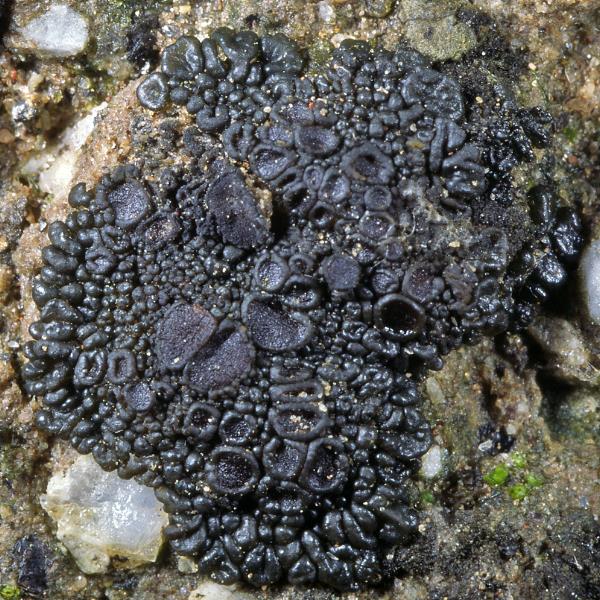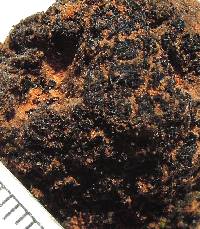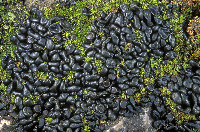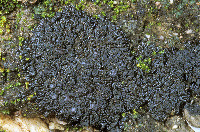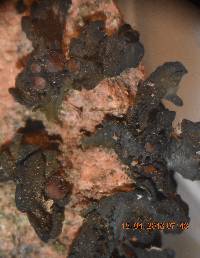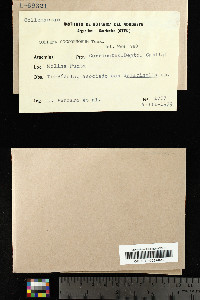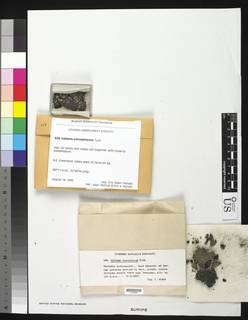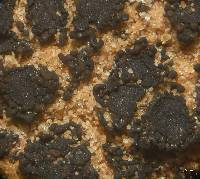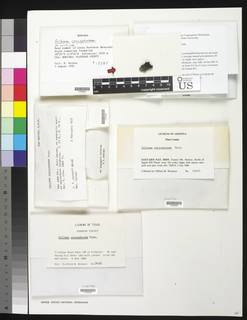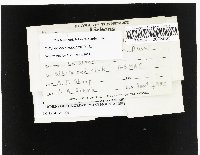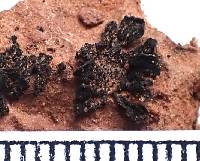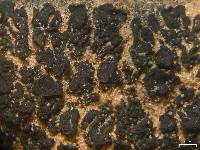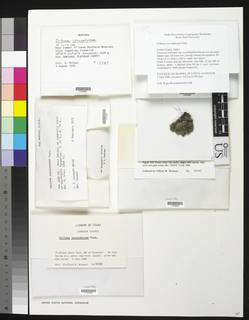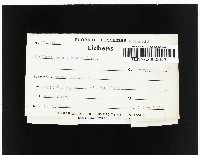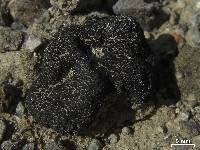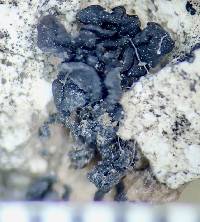
Consortium of Lichen Herbaria
- building a Global Consortium of Bryophytes and Lichens as keystones of cryptobiotic communities -
- Home
- Search
- Images
- Species Checklists
- US States: O-Z >
- US National Parks
- Central America
- South America
- US National Parks
- Southern Subpolar Region
|
|
|
|
Family: Collemataceae
[Collema atrum F. Wilson, moreCollema coccophorum Tuck., Collema congestum F. Wilson, Collema dubium B. de Lesd., Collema novomexicanum B. de Lesd., Synechoblastus coccophorus (Tuck.) Fink, Synechoblastus congesta (F. Wilson) F. Wilson] |
Nash, T.H., Ryan, B.D., Gries, C., Bungartz, F., (eds.) 2004. Lichen Flora of the Greater Sonoran Desert Region. Vol 2. Thallus: foliose or sometimes nearly crustose, small to rather small, up to 2.5 cm wide; single thalli: rounded or irregularly spreading upper surface: dark olive-green or black, dull, epruinose isidia: absent or present, globose lower surface: concolorous with the upper surface, with white, rhizinate hapters Apothecia: absent or numerous, sessile, sometimes crowded, (0.8-)1-1.5(-2.5) mm across disc: plane to convex, light or dark red or reddish brown, dull or somewhat glossy, smooth, epruinose margin: thin, entire to verrucose or sometimes lobulate, inconspicuous or slightly prominent, persisting or ±disappearing, lacking a pseudocortex true exciple: euthyplectenchymatous hymenium: hyaline, 70-90(-100) µm tall asci: clavate, 8-spored ascospores: hyaline, fusiform to ellipsoid, with acute or rounded ends, 1-septate, rarely with 2-3 septa, rarely ±constricted at septum, (10-)15-22(-26) x (4.5-)6.58.5(-9) µm Pycnidia: marginal, immersed, pale conidia: bacilliform, slightly swollen towards the ends, 4.5-6 x 1.5 Spot tests: all negative Secondary metabolites: none detected. Substrate and ecology: on various, often calciferous soils or soil crusts over rock, also on soft or crumbling rock, especially sandstone, common from sea level to high altitudes World distribution: North and South America, Europe, Arabian Peninsula and Socotra, eastern Africa, India, Oceania, and Australasia Sonoran distribution: throughout Arizona, southern California, Baja California and Baja California Sur, Sonora and Chihuahua. Notes: Collema coccophorum is most common on soil in the Sonoran Region. It is very variable in morphology with short lobes ranging from regular rosette-shaped to irregularly branched and knotty. Globose isidia are characteristic but may be obscured in irregularly shaped thalli. Collema tenax seems to be less frequent, but is similarly variable in thallus morphology. The species is best distinguished from Collema coccophorum by its 4-celled or sometimes submuriform ascospores. |
|
|
|
Powered by Symbiota

